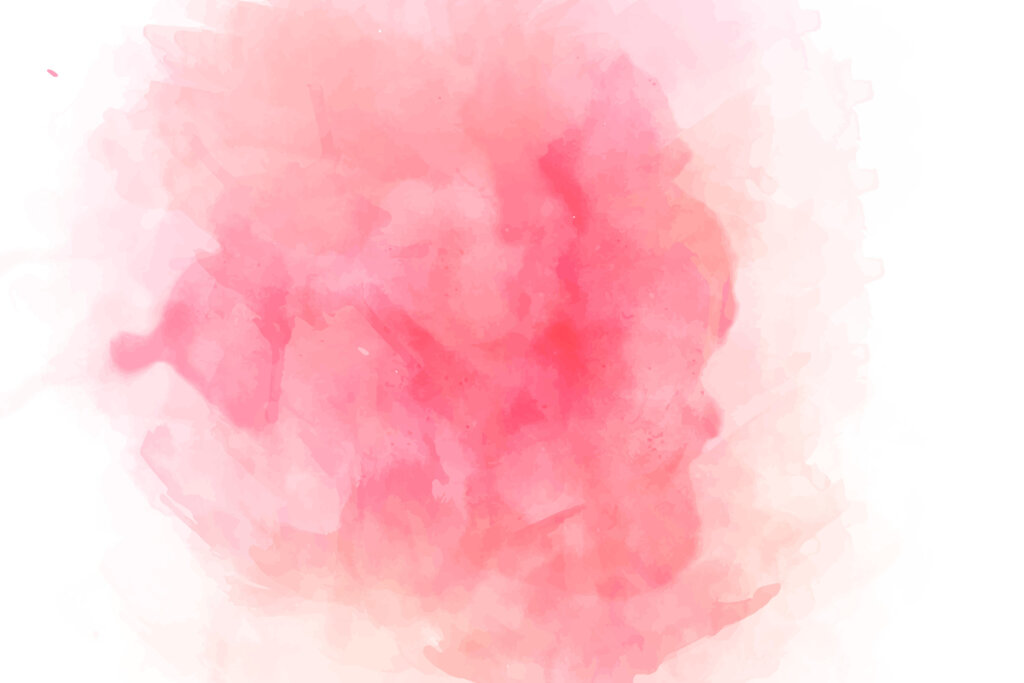What Does the Color Pink Mean in Psychology?

The color pink has rather emotional connotations. In fact, it brings to mind feelings such as sweetness, affection, and tenderness in their purest form. In addition, for many, it’s the symbol of romantic love and happiness.
Although pink is associated with femininity in the Western world, the truth is that this conception is recent. As a matter of fact, until around a hundred years ago, the color red was the quintessential masculine color. It signified aggression and strength. However, when fabrics faded, it became pink. It wasn’t until the 70s that pink became associated with women.
Colors have the power to elicit emotions, both positive and negative. Consequently, their study is exciting. In this article, you can discover more interesting facts about the color pink.
Characteristics of the color pink
Pink is a color that can be described as a light red. In the case of pigments, it’s red mixed with white. Its name comes from the flower of the same name.
Scientists seem to agree that pink isn’t a part of the electromagnetic spectrum. That’s because nothing emits pink light or reflects a corresponding wavelength. When your brain creates this tonality in your eyesight, it’s actually a mixture of two opposite colors in the spectrum: red and purple.

The meaning of the color pink
As we mentioned earlier, the color pink was closely associated with masculinity until the 70s, when it began to be associated with the softness of character and motherhood. It’s also seen as a youthful color.
In general, pink is a color that evokes positive feelings related to tenderness, delicacy, childishness, and, in the adult sphere, romantic love, without sexual overtones. However, depending on the clarity of the pink it can have different connotations:
- Light pink. If it’s closer to white, it’s more related to innocence and childishness.
- Dark pink. At this point, the hue is closer to violet. This hints at touches of eroticism and sensuality.
Pink also has certain negative connotations in terms of the softness and innocence it transmits. In fact, some people associate it with the cheesy, the twee, and the cloying.
Uses of the color pink
Colors have an effect on the unconscious mind. Marketers take full advantage of this fact to improve their sales. In neuromarketing, the meaning of the color pink is oriented towards softness, affection, motherhood, and beauty.
Products associated with personal hygiene, as well as those related to babies, are usually presented in pink.
Pink tends to induce calm, fights stress, and reduces aggressiveness. That’s why it’s used in hospitals, offices where creative work is carried out, and even prisons. However, given the association it has with gender roles, certain sectors of the population may reject it.

Pink in different cultures
The meaning of the color pink varies depending on each individual region. Factors such as culture, history, or the fauna and flora of the area can influence the symbolism of this color.
- Catholicism. Pink represents joy and is used in Masses on the fourth Sunday of Lent.
- Japan. Pink is associated with the erotic and intimate. It’s also the color of spring when the cherry blossoms are in bloom.
- Feng shui. Pink is linked to a more stable and lasting love, as well as family affection and marriage.
- Buddhism. The pink lotus flower represents the earthly symbol of Buddha. It’s related to the purity of the soul and the path to liberation from materialism.
- Hinduism. For Hindus, pink is reserved for the great deities. In fact, Lakshmi, the goddess of wealth, sits on a pink lotus flower.
- Southeastern Europe. In countries like Albania, Greece, Turkey, and Iran, pink is associated with protection and healing.
The blue-pink dichotomy as a representation of masculinity and femininity is strongly rooted in the West. However, advances in collective thinking have meant that pink is now more common for products aimed at males, such as clothing.
All cited sources were thoroughly reviewed by our team to ensure their quality, reliability, currency, and validity. The bibliography of this article was considered reliable and of academic or scientific accuracy.
- Clarke, T. y Costall, A. (2008). The Emotional Connotations of Color: A Qualitative Investigation. Color Research and application, 33(5): 406-410.
- Heller, E. (2004). Psicología del color. Cómo actúan los colores sobre los sentimientos y la razón. Editorial Gustavo Gili: España.
- Koller, V. (2008). ‘Not just a colour’: pink as a gender and sexuality marker in visual communication. Visual communication, 7(4): 395-423.
This text is provided for informational purposes only and does not replace consultation with a professional. If in doubt, consult your specialist.








